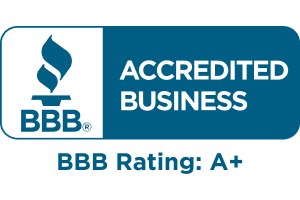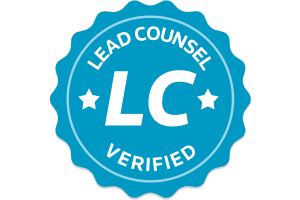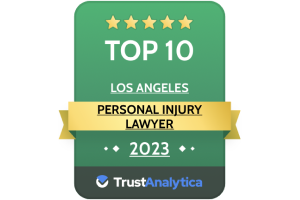- Free Consultation: 866-966-5240 Tap Here To Call Us
Personal Injury Checklist: 9 Steps to Protect Your Case
Start Here: Why This Personal Injury Checklist Matters (Introduction)
A single decision in the first 24–72 hours can change the value of your personal injury claim by thousands of dollars. Emergency departments handle about 26.2 million unintentional-injury visits each year, and unintentional injuries ranked among the top causes of death in 2023—proof that these cases are common and serious. According to CDC FastStats, unintentional injuries led to 222,698 deaths in 2023 and millions of ER visits in 2022. (cdc.gov)
Clear steps reduce stress and protect evidence. This checklist walks you through safety, documentation, insurance calls, fault, damages, deadlines, and when to bring in a lawyer. Each section highlights one pivotal action so you can focus on what matters when it matters.
Use this as a practical roadmap. Take it one step at a time, and remember: the goal is to protect your health first—and your claim right after. Small, smart actions early on create big leverage later.
Need quick guidance right now? Save this page and start with Step 1 below—then come back as you move through treatment and claims.
Step 1: Put Safety First and Report the Accident Immediately
Your first priority is safety and a documented report. Move to a safe location, check for injuries, and call 911 for emergencies. A prompt report creates an official record that insurers and courts rely on.
Keep your description short and factual. If the situation isn’t an emergency, you can still file a police report or incident report soon after. For workplace injuries, notify your employer as quickly as possible per company policy.
If you’re unsure who to contact, follow federal guidance from USAGov on reporting emergencies and crimes. (usa.gov)
Quick example
After a rear-end crash at a stoplight, Ana stayed in her car with hazards on, called 911, and waited for responders. The report captured time, location, and visible damage—details that later prevented a fault dispute. The fast report saved her hours of back-and-forth with insurers.
Step 2: What to Do After an Accident Checklist — From Photos to Witness Names
Evidence fades fast—capture it now. Photograph vehicles, injuries, skid marks, road hazards, and weather. Get names, phone numbers, emails, license plates, and the officer’s report number.
Aim for clarity over volume. Take wide shots to set the scene and close-ups for detail. Ask nearby businesses if security cameras captured the incident. Store everything in one folder with the date in the file name.
Tools help under pressure. The NAIC’s WRECKCHECK provides a step-by-step on-scene list; see the National Association of Insurance Commissioners’ guide “Don’t Be a Crash Dummy]” at [NAIC. (content.naic.org)
Fast field list (use only what applies)
- Photos and video: Vehicles, injuries, intersection, road conditions
- Contacts: Drivers, passengers, witnesses, officer/badge number
- Docs: Insurance cards, registration, report number, tow info

Step 3: How to Document Injuries and Medical Bills the Right Way
Your medical paper trail is the backbone of your claim. Get examined early—even if pain seems minor. Delayed treatment lets insurers argue the injuries weren’t caused by the incident.
Ask every provider for visit notes, imaging reports, invoices, and receipts. Keep a simple symptom journal: pain levels, limitations at work, missed activities, and medication effects. Track mileage to appointments and out-of-pocket costs.
You have a federal right to your medical records within set timelines. Use HHS guidance on the HIPAA Right of Access to request records or send them to your lawyer: Individuals’ Right under HIPAA to Access their Health Information. (hhs.gov)
Step 4: Dealing With Insurance Adjusters After a Crash (What to Say—and Not Say)
Stick to facts, not speculation. Notify your insurer promptly. When another driver’s insurer calls, you can share basics (date, location, vehicles involved) but avoid guessing about speed, distances, or injuries before you finish medical evaluations.
Decline recorded statements or broad medical authorizations until you understand the implications. Written statements later—after treatment stabilizes—are safer and clearer.
For consumer-focused guidance on claims basics, see the NAIC’s “What You Should Know About Filing an Auto Claim” at NAIC. (content.naic.org)
Step 5: Understanding Fault and Negligence — How Liability Is Determined
Fault isn’t all-or-nothing—percentages matter. Most states use comparative negligence, reducing your compensation by your share of fault; a few still use contributory negligence, which can bar recovery if you’re even 1% at fault.
Elements of negligence include duty, breach, causation, and damages. Evidence that clarifies visibility, speed, and right-of-way (photos, diagrams, EDR data, witness accounts) shapes the liability split.
For a plain-English explainer on comparative vs. contributory rules, see Cornell Law’s LII entry on comparative negligence. (law.cornell.edu)
Numbers make it concrete
If DeShawn is 20% at fault and total proven damages are $50,000, his recovery becomes $40,000 in a comparative-negligence state. That percentage turns evidence quality into real dollars.
Step 6: Track Lost Wages and Other Damages to Maximize Compensation
You can’t recover what you can’t prove. Save pay stubs, HR letters confirming missed time, and doctor notes for work restrictions. Self-employed? Gather invoices, 1099s, prior tax returns, and a brief explanation of lost gigs or opportunities.
Damages include medical bills, wage loss, property damage, and pain and suffering. Courts look for documentation and reasonableness—overreaching or “speculative damages” undermine credibility.
For definitions that courts use, see LII’s overview of compensatory damages. (law.cornell.edu)
What to track (keep it tidy)
- Lost income: Pay stubs, HR letter, timesheets, cancelled gigs
- Out-of-pocket: Co-pays, meds, devices, rides, child care
- Daily impact: Brief pain diary; specific tasks you can’t do yet
Step 7: Know the Statute of Limitations for Personal Injury Claims in Your State
Deadlines can quietly erase strong cases. States set strict windows—often 1 to 6 years—to file a personal injury lawsuit. Some claims against government entities require a special notice within weeks or months.
The clock usually starts on the injury date, but discovery-rule exceptions can apply (for example, some medical cases). Don’t let ongoing settlement talks lull you past the deadline; filing preserves your rights.
Check a 50-state overview via Justia’s survey of civil statutes of limitations: Civil Statutes of Limitations — 50-State Survey. (justia.com)
Quick example
A shopper slips in March 2025. Negotiations drag into 2027. Filing before the deadline keeps leverage. Missing it can mean no recovery at all despite clear liability.
Step 8: When to Hire a Personal Injury Lawyer and What to Expect
Early advice prevents costly missteps. A lawyer helps control statements, preserve evidence, calculate damages, and time settlement vs. filing. Most personal injury attorneys work on contingency—no fee unless you recover—so you can focus on healing.
Expect a case plan, evidence requests, and guidance on treatment and liens. Ask about communication cadence and who handles your file day to day.
For objective tips on choosing counsel and using referral services, see the American Bar Association’s guide: How Do I Find a Lawyer?. (americanbar.org)
Step 9: Common Mistakes That Can Hurt Your Case (and How to Avoid Them)
Avoid easy traps that devalue claims. Skipping follow-up care, posting about the accident on social media, exaggerating symptoms, or accepting the first offer before treatment ends all shrink leverage.
Be cautious with the other driver’s insurer. You can cooperate without giving a recorded statement or signing broad medical releases before you understand the scope.
For practical do’s and don’ts when the other insurer keeps calling, review Nolo’s guidance: Do I Have to Talk to the Other Driver’s Insurance Company?. (nolo.com)
Quick list to stay safe
- Keep treatment consistent: gaps look like you’re “fine”
- Limit statements: facts only; no recorded statements yet
- Don’t sign blanket releases: keep records request targeted
After the Checklist: How Settlements Work and Typical Timelines
Most cases settle; a few go to trial. Settlement talks usually follow medical stabilization and full documentation. Complex cases or disputed liability take longer because experts and depositions add steps.
A common arc: treatment and documentation, demand package, negotiation/mediation, then suit if needed. Filing often restarts serious talks and preserves the statute.
For a stage-by-stage walkthrough, see Nolo’s Personal Injury Case Timeline. (nolo.com)
Want a calm, professional second opinion? Gather your photos, records, and bills. Create a one-page summary, then talk with a lawyer about strategy and timing before responding to the next adjuster call.
Free Case Review: Call or Message Us With Your Questions Today (Conclusion)
You don’t have to do this alone—clarity beats guesswork. If you’re overwhelmed by medical bills, time off work, and insurer calls, lean on professionals who do this every day. A short conversation can confirm your next best move and protect your timeline.
If you need free, civil-law guidance to get oriented, explore the ABA’s pro bono Q&A platform: ABA Free Legal Answers. (abafreelegalanswers.org)
Staying consistent with care, documenting everything, and getting timely advice are the three levers that most increase settlement value. Start with one action today—make the call, request the records, or jot down your pain journal entry. Momentum is your friend.
FAQs
Can I still file a personal injury claim if I felt fine at the scene but hurt later?
Yes—delayed symptoms are common. Soft-tissue and concussion symptoms often appear hours or days later. Get evaluated promptly and connect the new findings to the incident in your records. Keep a brief daily symptom log to show progression.
Do I have to give the other insurer a recorded statement?
No—recorded statements are optional. You can provide basic facts without recording, or ask to submit a written statement later. Many people wait until they’ve completed initial treatment or spoken with an attorney.
What if I missed work but used PTO—can I claim lost wages?
Often yes—lost wages include paid time off used for injury care. Ask HR for a letter detailing dates and hours missed and whether PTO was used. Keep doctor notes that recommend time off.
How do pain and suffering get calculated?
Insurers look at treatment, duration, and impact. There’s no fixed formula. Consistent medical documentation, specialist referrals, and a credible pain journal help translate day-to-day limitations into persuasive, non-economic damages.
Should I settle before I finish treatment?
Usually not—settling too early risks undervaluing your claim. Waiting until you reach maximum medical improvement clarifies future care costs and reduces surprises that you can’t reopen later.












